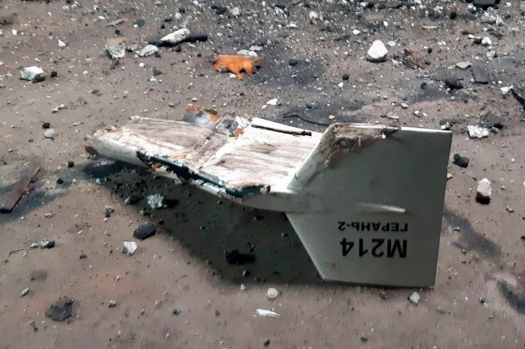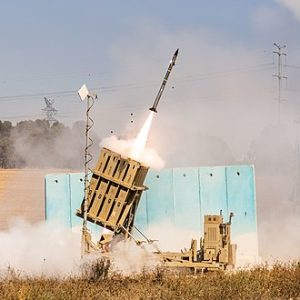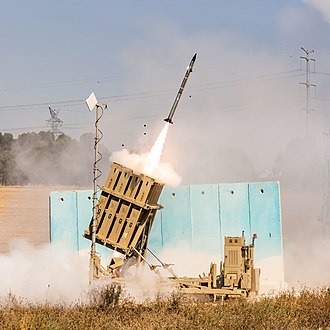Vienna, February 27, 2023
by Edward Steen

If not about Putin’s latest nuclear rumblings, and new territorial threats to the rest of the old USSR, much of the latest talk about the Ukraine war is focussed on China. Will this “foreover ally” of Russia supply Putin with drones, as Iran is already doing, and as US intelligence fears?
Here, veteran AEJ member Llewellyn King, columnist and political broadcaster in Washington, argues that drones have decisively changed the business of warfare , and not just in Europe.
Iranian drones in North Africa threaten Morocco
Drones are the new weapons of war, King argues, causing military tactics and force structure to be reimagined. They bring a particularly deadly reality to guerrilla warfare, posing an existential threat in many theatres, especially the Middle East. Cities are defenseless.
Now Iranian drones are being deployed in North Africa and are posing a direct threat to Morocco.
Moroccan diplomats are actively raising the issue with Western governments. In collusion with Algeria, they say, Iran is supplying the Polisario Front rebels engaged in guerrilla attacks against Morocco in the Western Sahara.
While the world was mesmerized above all by its nuclear programme, Iran quietly built itself into a powerful supplier of military drones to the insurgents of the world. Notably, of course, to Russia for use in Ukraine, but also to its proxies across the Middle East.
Iran’s experience with drones goes back to the Iran-Iraq war between 1980 and 1988. In those days the drones were line-of-sight, simplistic, and only good for surveillance.
Recyling and re-engineering Western weapons and technology
Since then Iran has built generations of drones, large and small, but of increasing sophisticatation. They were helped by captured U.S. drones which they reengineered, incorporating the latest technology.
Engines and parts have often been smuggled into Iran from the West. For example, engines capable of powering drones were smuggled into Iran by declaring them for jet skis or snowmobiles. This was the case with the Austrian-built Rotax engine until the subterfuge was detected.
Now, the Iranian military claims that its defense industrial complex can make the engines and all the parts of its drones domestically. One way or another, Iran now supplies an impressive array of drones with great loitering times and long delivery distances.

Ilan Berman, senior vice president of the American Foreign Policy Council, told me that Iran has concluded that its strength is not in force-on-force competition, but in aiding asymmetric conflicts, “which is why they spent somuch money and time on terrorism, and so much money and time on ballistic missiles. Then they hit upon drones as the evolution of precisely this strategy.”
Morocco is right to be worried about its new vulnerability. Drones, while they might not win a war, can inflict severe damage on a variety of targets, from tourist centres to military installations to vital power grids and power stations – as I argued last September, when drone attacks were blamed for devastating fires in Saudi Arabia.
Drones are light, cheap, and easily transported and hidden. Today’s generation of Iranian drones can carry substantial ballistic loads, as well as loitering for as long as 24 hours and sending back vital material on critical infrastructure.
There is a drone arms race taking place in the Middle East. After Iran, the largest manufacturer of drones in the region is Turkey – and even small but wealthy countries like the United Arab Emirates are building up drone manufacturing capability. Turkish drones were critical in Azerbaijan’s recent conflict with Armenia, and they were used by both sides in the Libyan conflict.
What is lacking is adequate defenses against drone attacks, whether these are single mischief-making assaults or swarms designed for substantial damage. Berman said the only effective defensive system against drones is the “Iron Dome”, built with Israeli technology and assisted and financed by the United States.

Israel has so far been reluctant to sell Iron Dome, which catches low-flying projectiles fired from as close as 2.5 miles from the place of intercept. It is a complex, radar-based, portable defense arrangement, designed to destroy incoming rockets and drones from Gaza and its neighbours Syria and Lebanon, both of which host non-state Iranian proxies.
Berman believes that as Morocco is a signatory to the Abraham Accords, Israel might sell the Iron Dome system to Morocco, but that would take years of negotiation and sales are subject to a U.S. veto.
At present, Morocco’s strategy is to alert the world to the changing dynamics in the region and to the vulnerability of almost any country to drone attack – a new addition to guerrilla warfare and a deadly vulnerability of countries like Morocco, where state and non-players can cause mayhem without winning on the ground.
“What the Iranians bring to the table is that it is known that they are the world’s leading state sponsor of terrorism, now moving into Africa, enhancing the capability of their proxy groups,” Berman said.
Morocco, despite its defence accord with Israel reported by Antylar, is right to be worried. But so is the world. Drones are a lethal infection, spreading fast.
- Llewellyn King is on Twitter: @llewellynking2, and executive producer and host of PBS’s White House Chronicle. His columns can be found at InsideSources


